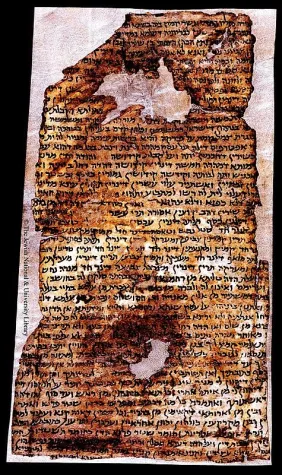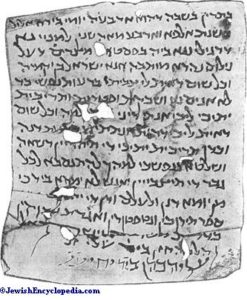Luke’s Nativity – An Investigative Breakdown
Luke and Matthew are two different perspectives about the Nativity circumstances of Jesus of Nazareth, yet they have the common threads of the historical timeline, geographic locations and the key figures.
In the very opening paragraph of Luke, the author states that his letter is based on the eyewitness accounts “from the beginning”:
LK 1:2-4 “Inasmuch as many have undertaken to compile an account of the things accomplished among us, just as they were handed down to us by those who from the beginning were eyewitnesses and servants of the word, it seemed fitting for me as well, having investigated everything carefully from the beginning, to write it out for you in consecutive order, most excellent Theophilus; so that you may know the exact truth about the things you have been taught.” (NASB)
Starting with the birth of John the Baptist, Luke’s account describes circumstances not found in any other Gospel. Zechariah, a Levite Jewish priest, had been chosen to represent his priestly division to offer incense to God.
While inside the Temple, the angel Gabriel appeared to him specifically described as standing on the right side of the altar. God’s message delivered by angel Gabriel: Zechariah’s wife, Elizabeth, would become pregnant with a son to be named John. Zechariah didn’t believe it.
Zechariah and Elizabeth were considered “advanced in years.” It is a relative term considering that girls married and began having children as soon as nature allowed, about 13 years of age.[1]
Gabriel went on to foretell the child’s purpose in life, even that the baby would be filled with the Holy Spirit before he was born. Doubting Gabriel’s message, Zechariah was struck dumb during his wife’s pregnancy.
Luke does not describe Elizabeth’s pregnancy as miraculous. Two Greek words referencing a miracle are used elsewhere in Luke, but not used here for Elizabeth.
In the other instances, the Greek word dunamis is translated to English using such words as “miracles,” “deeds of power,” “power of the Spirit,” or “mighty works.” Greek word semelon is translated with such words as “miracle,” “miraculous sign,” “sign from heaven.”[2]
Six months later in Nazareth about 90 miles away, Mary, who had been betrothed to Joseph, was going about her daily routine. Gabriel met her saying, “”Greetings, favored one! The Lord is with you.” The angel’s message continues to be quoted:
LK 1:31-32 “And behold, you will conceive in your womb and bear a son, and you shall name Him Jesus. He will be great and will be called the Son of the Most High; and the Lord God will give Him the throne of His father David…” (NASB)
Mary is quoted using the personal pronoun “I” asking Gabriel how she could have a baby when she was a virgin. Mary and the angel Gabriel are the only ones present making Mary the primary source of the conversation. Gabriel went on to explain the Holy Spirit would impregnate her and she would give birth to the Son of God:
LK 1:35 “The Holy Spirit will come upon you, and the power of the Most High will overshadow you; therefore the child to be born will be holy; he will be called Son of God. (NRSV)
Elizabeth re-enters Luke’s account when Gabriel told Mary that she was 6 months pregnant. After Gabriel departed, Mary hurried to go visit her. Upon hearing Mary’s greeting, Elizabeth’s babe leapt within her.[3]
Presumably only Mary and Elizabeth are present for this greeting dialog, similar to Zechariah and Gabriel. Elizabeth’s blessing statement is consistent with both Gabriel’s message and her greeting to Mary. If Elizabeth was not available to the author, then Elizabeth’s praise containing four personal pronouns of “me” and “my” was restated by Mary:
“Blessed are you among women, and blessed is the fruit of your womb! But why is this granted to me, that the mother of my Lord should come to me? Blessed is she who believed, for there will be a fulfillment of those things which were told her from the Lord. For indeed, as soon as the voice of your greeting sounded in my ears, the babe leaped in my womb for joy. Blessed is she who believed, for there will be a fulfillment of those things which were told her from the Lord.”
Less obvious, although a very important detail, Elizabeth knew about Mary’s immaculate conception before Mary told her. It was only a few days after Gabriel told Mary she would conceive the Son of God.
Mary’s pregnancy had yet to show any symptoms and it seemed only Mary knew about it. A woman’s pregnancy is not naturally known even to the mother, barring modern medicine, until 2-4 weeks or later after conception.[4]
Upon hearing Elizabeth’s blessing, Mary was filled with emotion. Her detailed passionate praise is quoted with the personal pronouns “my” and “me” five times. The primary source of Mary’s praise strongly appears to be Mary herself.
Matthew articulates Joseph’s reaction to discovering Mary’s pregnancy months later after she returned from the trip to visit Elizabeth and he was understandably upset. Joseph was considering a divorce, according to Matthew, until a visitation by Gabriel informed him Mary had not cheated, rather the Holy Spirit impregnated her as a fulfillment of prophecy.
 Luke’s Nativity identifies two Roman rulers not found in Matthew serve as historical date markers in addition to King Herod – Caesar Augustus and Quirinius governing in Syria.
Luke’s Nativity identifies two Roman rulers not found in Matthew serve as historical date markers in addition to King Herod – Caesar Augustus and Quirinius governing in Syria.
Another specific detail is a decree issued by Caesar Augustus. This became the compelling factor for Mary to travel to Bethlehem in her late stage of pregnancy where she was forced to give [5] birth in a stable because all the inns were full.
Luke quotes an angel appearing to shepherds outside of Bethlehem announcing his birth and a larger number of angels in the sky praising God. The source of the quote were the shepherds.
LK 2:10-14 “…behold, I bring you good tidings of great joy which will be to all people. For there is born to you this day in the city of David a Savior, who is Christ the Lord…And suddenly there was with the angel a multitude of the heavenly host praising God and saying: “Glory to God in the highest, And on earth peace, goodwill toward men!”(NKJV)
Immediately, the shepherds quickly went into the little town of Bethlehem and found Mary and Joseph with Jesus lying in a manger confirming the angel’s birth announcement. What the shepherds witnessed, they told to people who marveled at their report.
Matthew, on the other hand, outlines a different Nativity aspect telling how the Magi had observed signs in the sky that prompted their long journey to find the newborn “King of the Jews.” After consultation with Jewish religious experts, King Herod revealed to the Magi where they could locate the babe. When the Magi found Jesus, the family had moved to a house.
Luke adds two other details. Eight days later during the Jewish circumcision event, Joseph and Mary officially named their baby Jesus as each were separately instructed by Gabriel. At the 30-day mark according to the Law, the parents presented Jesus to the Lord in the Temple in Jerusalem and offered a sacrifice which required a priest.
Much of Luke’s Nativity account is unique yet it is in sync with Matthew. Four key points are common to Luke and Matthew – Jesus was born in Bethlehem; Nazareth is his hometown; Herod is King with governing authority of country of Judea. Does Luke’s Gospel Nativity meet the standards of credibility?
Updated December 13, 2023.
This work is licensed under a Creative Commons Attribution-NonCommercial-NoDerivatives 4.0 International License.
REFERENCES:
[1] Luke 1:7, 18. NASB, NKJV. West, Jim. “Ancient Israelite Marriage Customs.” Quartz Hill School of Theology. n.d. http://www.theology.edu/marriage.htm> Rich, Tracey R. “Marriages.” Judaism101. 2011. <http://www.jewfaq.org/marriage.htm>
[2] Luke 4:14; 10:13; 19:37; 23:8. NetBible.org. Greek text. dunamis <1411>, semelon <4592>
[3] Slatzman, Russell. “Biblical travel: How far to where, and what about the donkey?” Aleteia. 2017. https://aleteia.org/2017/01/24/biblical-travel-how-far-to-where-and-what-about-the-donkey> Kosloski, Philip. “Mary traveled a highly dangerous path to visit Elizabeth. Aleteia. 2019. <https://aleteia.org/2019/05/31/mary-traveled-a-highly-dangerous-path-to-visit-elizabeth>
[4] “Month by Month.” Planned Parenthood. 2020. <https://www.plannedparenthood.org/learn/pregnancy/pregnancy-month-by-month> “Home pregnancy tests: Can you trust the results?” Mayo Clinic. 2019. <http://www.mayoclinic.org/healthy-living/getting-pregnant/in-depth/home-pregnancy-tests/art-20047940> “How long does it take to know I’m pregnant?” nct.org. n.d. <https://www.nct.org.uk/pregnancy/am-i-pregnant/how-long-does-it-take-know-im-pregnant> Marple, Kate. Ed. “Early signs of pregnancy: When will I feel symptoms?” babycenter.com. 2019. <https://www.babycenter.com/getting-pregnant/how-to-get-pregnant/early-signs-of-pregnancy-when-will-i-feel-symptoms_10372077>
[5] The Nativity Story. TheBridgeChurch. image. n.d. <http://www.thebridgechurch.co.uk/wp-content/uploads/2014/11/The-Nativity-Story.jpg>


